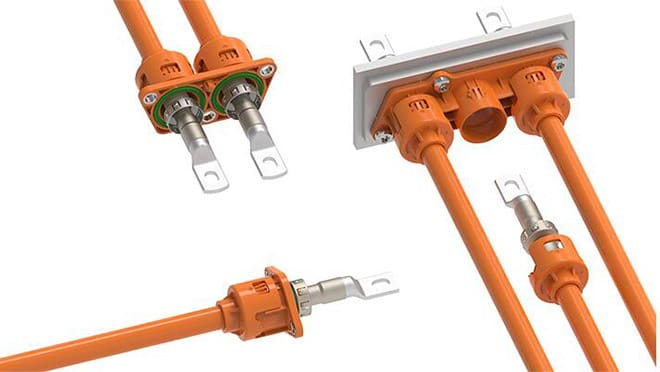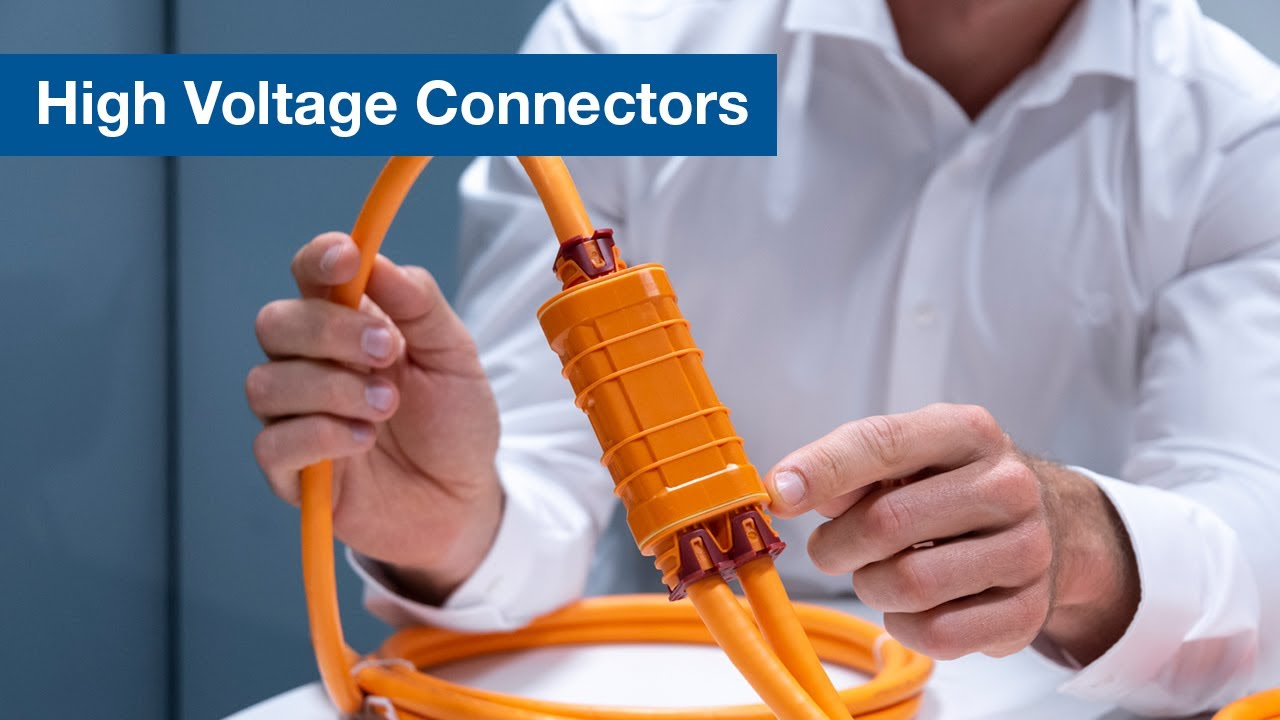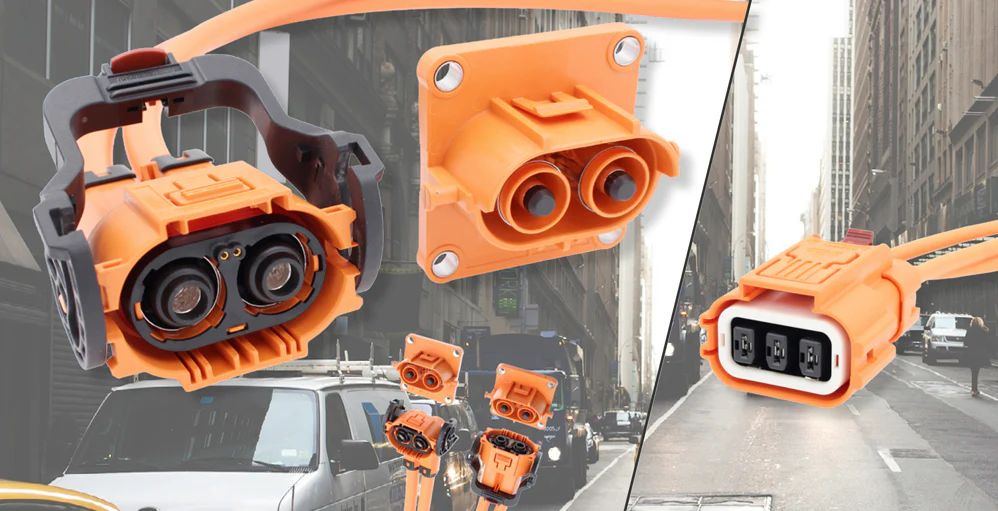As the market explosiveness of new energy vehicles continues to increase, the market size of automotive connectors continues to expand. According to Bishop & Associates (a global connector market research organization), the global automotive connector market size will reach US$19.452 billion in 2025, of which China's automotive connector market will account for 23% of the total, with a size of approximately US$4.468 billion. China is the world's largest automobile producer and also a leading country in the research and development and output of new energy vehicles. In the next few years, the size of China's on-board connector market is expected to exceed the forecast of Bishop & Associates.

High-voltage connector technology: high standards
The so-called "high-voltage connector" is a connector that serves the high-voltage system in the car. Traditional fuel vehicles mainly rely on engines and fuel to meet the requirements of the car for mechanical kinetic energy, and do not have too many requirements for voltage; while electric vehicles use electricity as energy, and use power batteries, drive motors, and drive motor controllers to complete the kinetic energy supply of the car, which puts forward higher standards for the voltage and current carrying capacity of related components.
High-voltage connectors and electric vehicles are interdependent. In 2009, my country issued the "Automotive Industry Adjustment and Revitalization Plan" and launched the "Ten Cities, Thousand Vehicles" subsidy plan to promote new energy vehicles. Since then, my country's high-voltage connectors have continued to move forward with the pace of new energy vehicles, and have developed to the fourth generation by 2022.

Xu Ping'an, chief technology officer of Basba, told us that the newly added "secondary unlocking" function of the third-generation product can protect the core electrical parts of the product and ensure the safety of users; the fourth-generation product is smaller in size, has a higher current density, and a controllable temperature rise, providing better safety and reliability for high-power charging and discharging. Basba New Energy Technology Co., Ltd. is a company focusing on high-voltage connection system solutions for electric vehicles, with 12 years of experience in the research and development of vehicle-mounted connectors. High-voltage vehicle-mounted connectors are mainly used in lithium batteries, motors, electronic controls, DC/DC converters, OBCs, PDUs and other systems, and work together with high-voltage wiring harnesses to transfer battery kinetic energy to various components with the help of high-voltage and high-current lines. Different system components and differences in the cross-sectional area of wires have different electrical performance requirements for vehicle-mounted connectors. Generally speaking, the rated voltage values of high-voltage connectors range from 60v to 1500v, and the rated current values range from 20A to 300A. In addition, vehicle-mounted connectors also have high requirements for the mechanical and environmental performance of products. High-quality high-voltage connector products must pass various mechanical performance tests, environmental tests, and electrical performance tests, such as terminal retention, connector plug-in and pull-out force, drop test, 960H neutral salt spray test, 1008H aging test under 125℃ environment, -40℃~125℃ hot and cold shock, etc. As electric vehicles continue to move towards fast charging and super charging, various new energy vehicle companies are constantly improving the vehicle voltage platform. 2022 will be the first year for the upgrade from 400v to 800v high-voltage platform. The new challenges brought to high-voltage connectors are still concentrated on the electrical level. Can the rated voltage and rated current be further improved? And how to deal with the high temperature hazards caused by high-power current? The fifth-generation high-voltage connector is very likely to combine with liquid cooling technology to meet electrical and temperature requirements.
Supply and demand side of high-voltage connectors: large market
New energy vehicles can be divided into two categories: new energy passenger vehicles and new energy commercial vehicles according to their use.
According to the data of China Automobile Association, from January to September this year, the cumulative sales of new energy passenger vehicles reached 4.363 million units, a year-on-year increase of 111.5%; the cumulative sales of new energy commercial vehicles reached 204,000 units, a year-on-year increase of 80.1%. New energy passenger vehicles and commercial vehicles are driving the continuous expansion of the market for high-voltage connectors. In the field of low-voltage connectors, due to the difference in the time of automobile manufacturing, the technical patents have long been in the hands of foreign car companies, and the gap between the domestic and foreign low-voltage connector markets is significant. If the short board of my country's on-board connectors is the low-voltage connector, then the long board is at the end of the high-voltage connector. This is due to the rapid development of my country's new energy vehicles. Domestic car companies are keeping pace with foreign car companies, and even beautifully surpassing and leading. In the field of new energy commercial vehicles, high-voltage connectors have achieved a localization rate of nearly 100%, and have also surpassed foreign countries in terms of technology. my country's high-voltage connectors used in new energy commercial vehicles use integrated panels and have developed for many generations, while similar foreign products still retain the traditional lock body structure. At the same time, my country's new energy passenger car high-voltage connectors are also constantly increasing the domestic penetration rate. At present, the major enterprises in my country that have deployed high-voltage connectors for passenger cars include Rekoda, AVIC Optronics, Basba, Yonggui Electric, and Sunco Intelligent. Basba revealed that the localization rate of high-voltage connectors for passenger cars has exceeded 60%. In addition to the localization rate, high-voltage connectors are also far more valuable than low-voltage connectors. Since the battery pack capacity of new energy commercial vehicles is several times that of passenger car battery packs, the value of commercial vehicle high-voltage connectors is higher than that of passenger car high-voltage connectors.

The future of high-voltage connectors: modularization
The technical orientation of supercharging and fast charging for new energy vehicles also affects the on-board connectors. As the battery capacity increases, the body becomes heavier and heavier, and the connectors and wiring harnesses are used more and more. Therefore, the modularization of components becomes more and more important.
The modularization of high-voltage connectors has many benefits. "Multifunctional integration and modularization can better meet the safety requirements of the whole vehicle. Lightweight, easy installation, lower cost, improved aesthetics, etc., these are the benefits of modularization and integration." Regarding the development trend of high-voltage connectors, Xu Ping'an, chief technology officer of Basba, also emphasized modularization and lightweight. In addition, the electromagnetic compatibility and volume current ratio capabilities of my country's high-voltage connectors and wiring harness assemblies also need to be continuously improved. The research and development certification of automotive-grade connectors is different from that of other types of connectors. For safety, reliability, and durability considerations, the total cycle of product self-certification plus customer certification is longer. High-voltage connectors and new energy vehicles are a "community of destiny". Riding the wind of new energy vehicles, the high-voltage connector market is soaring.